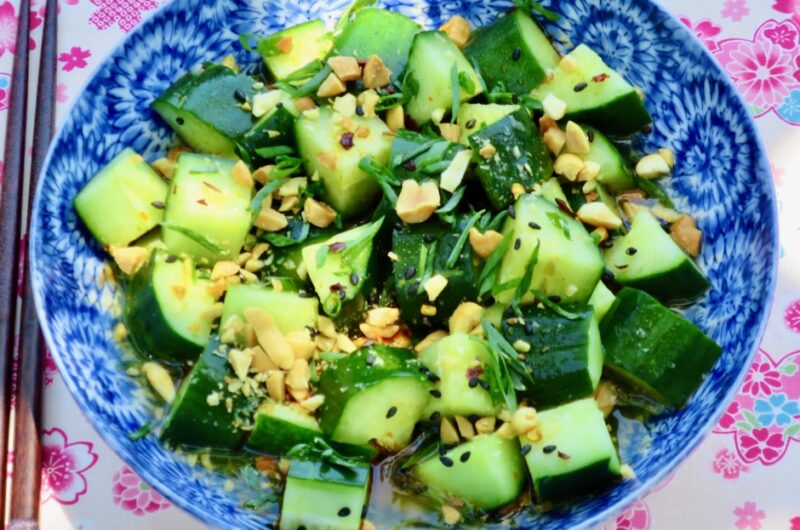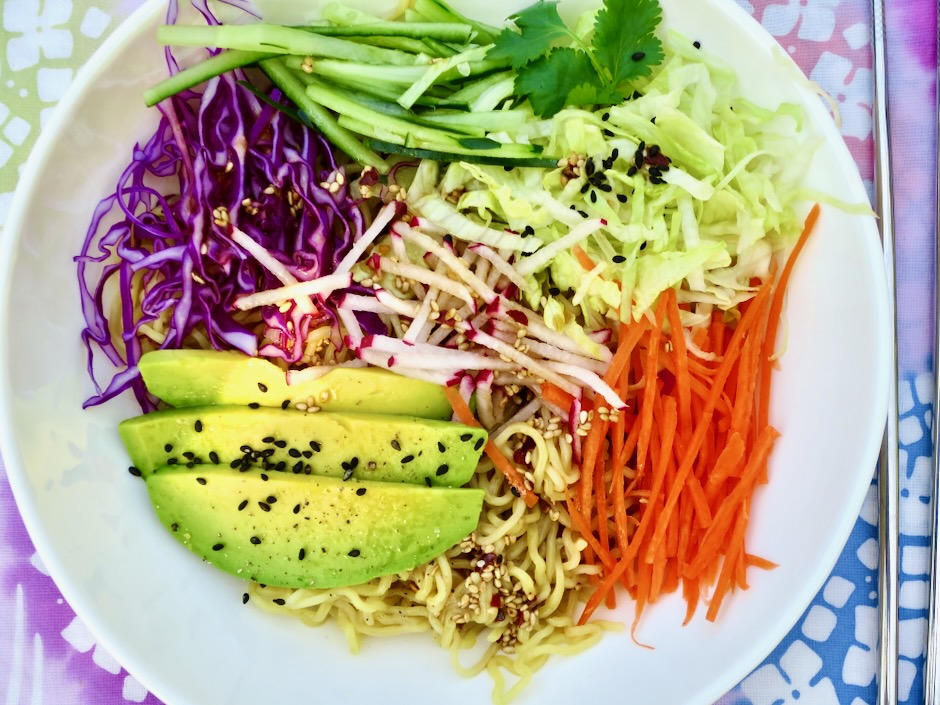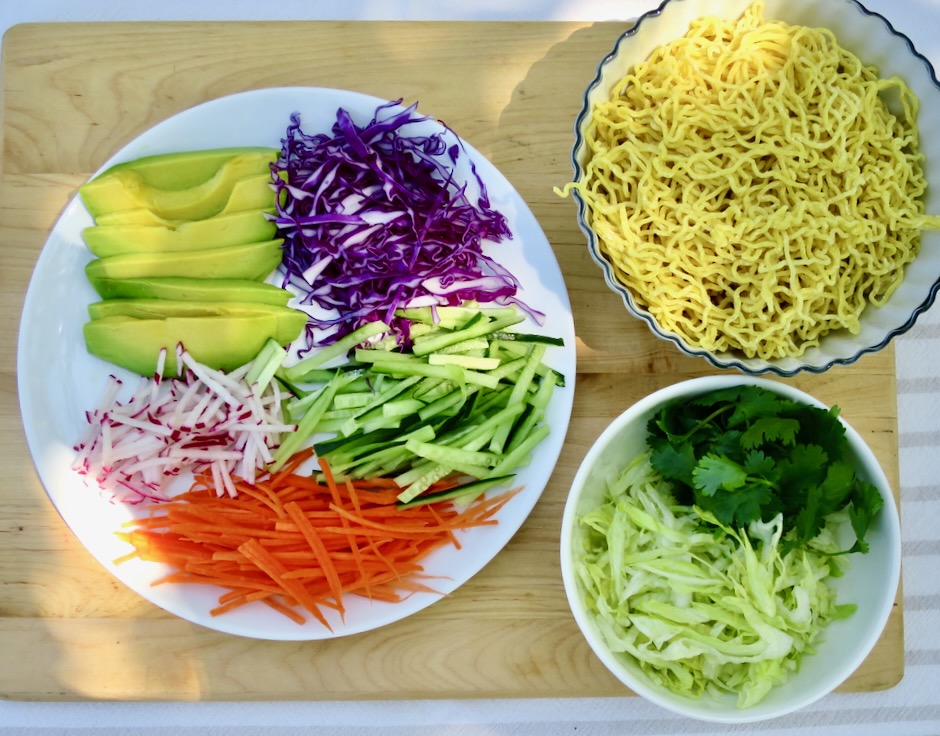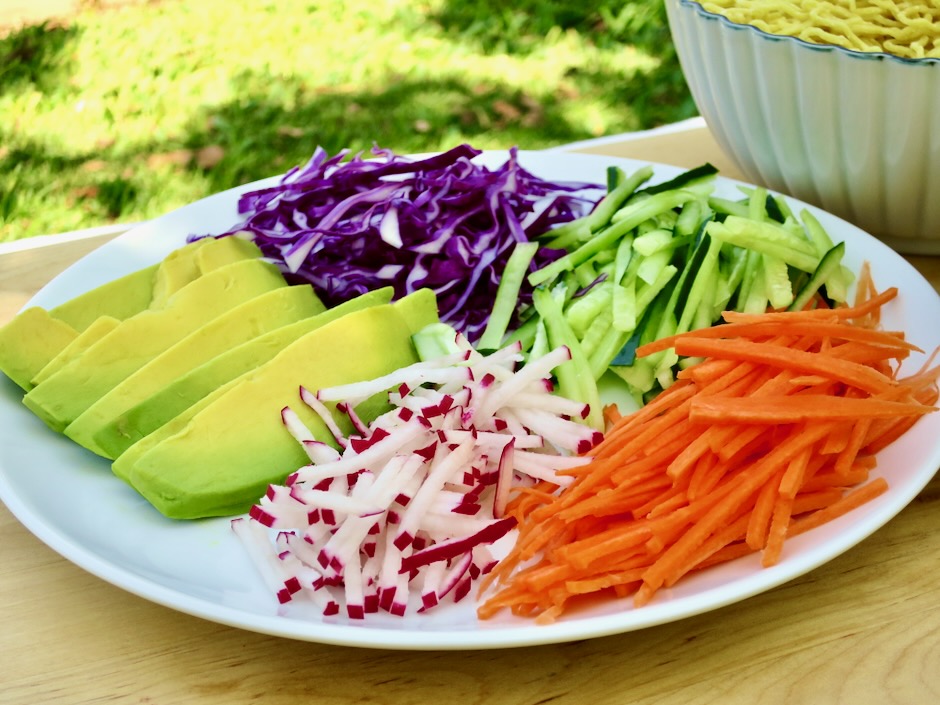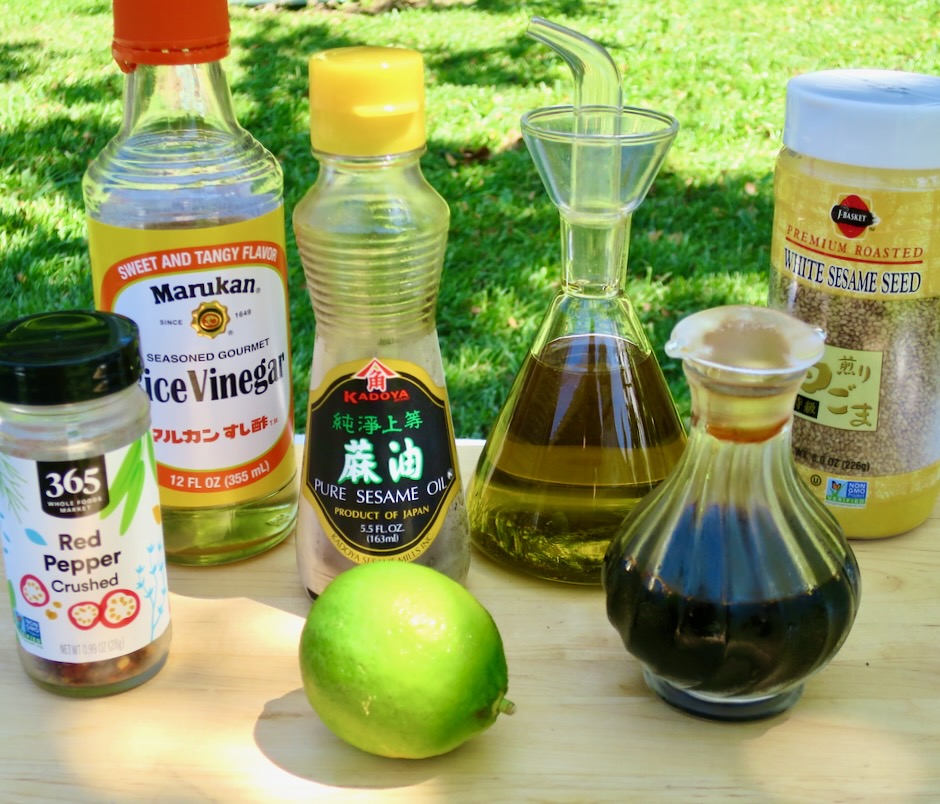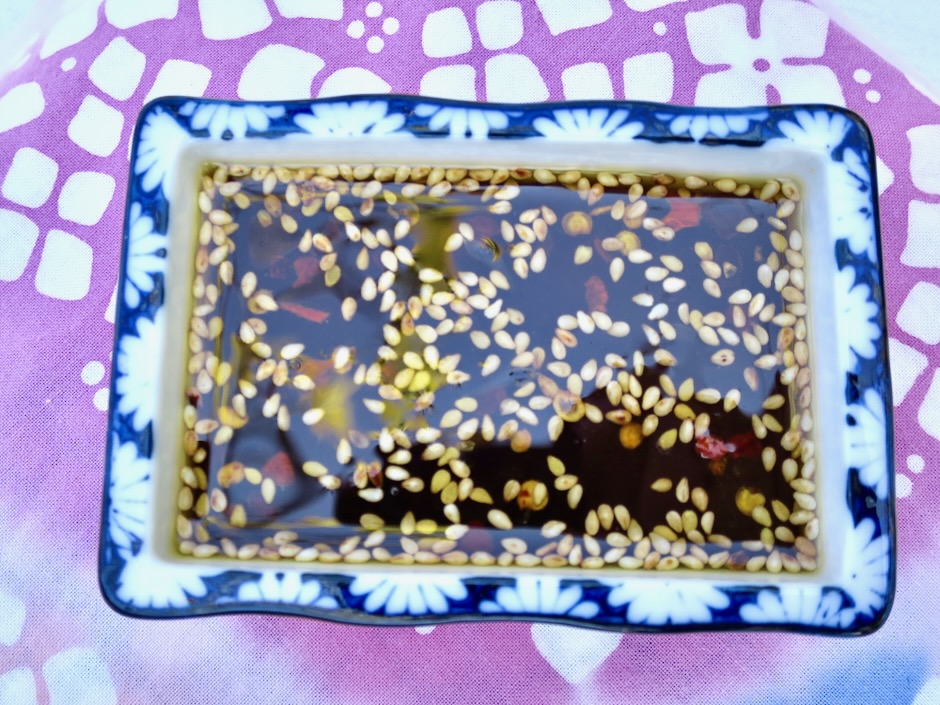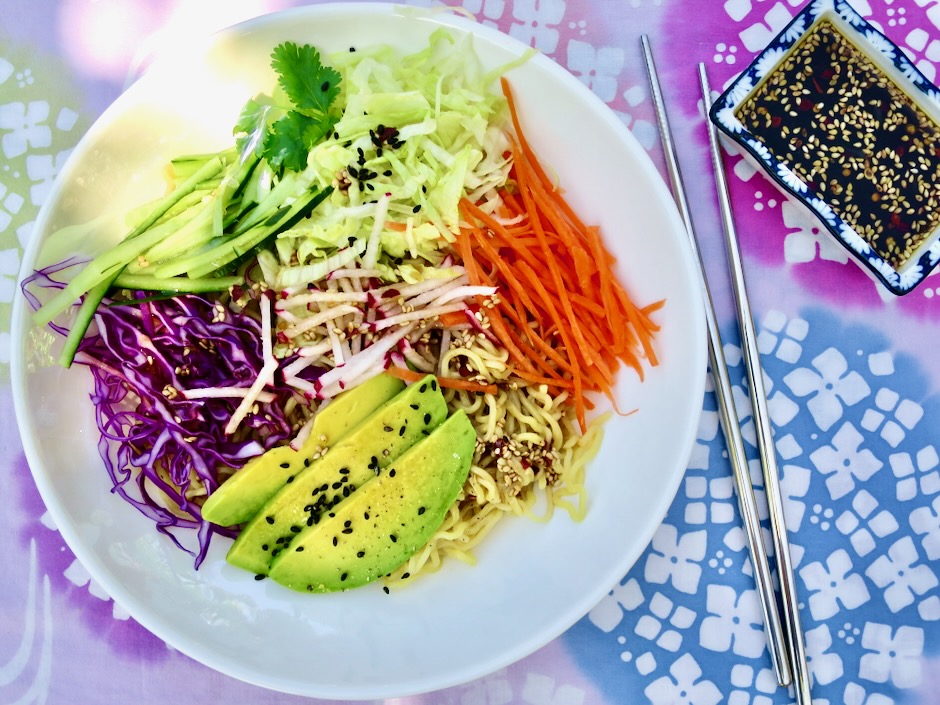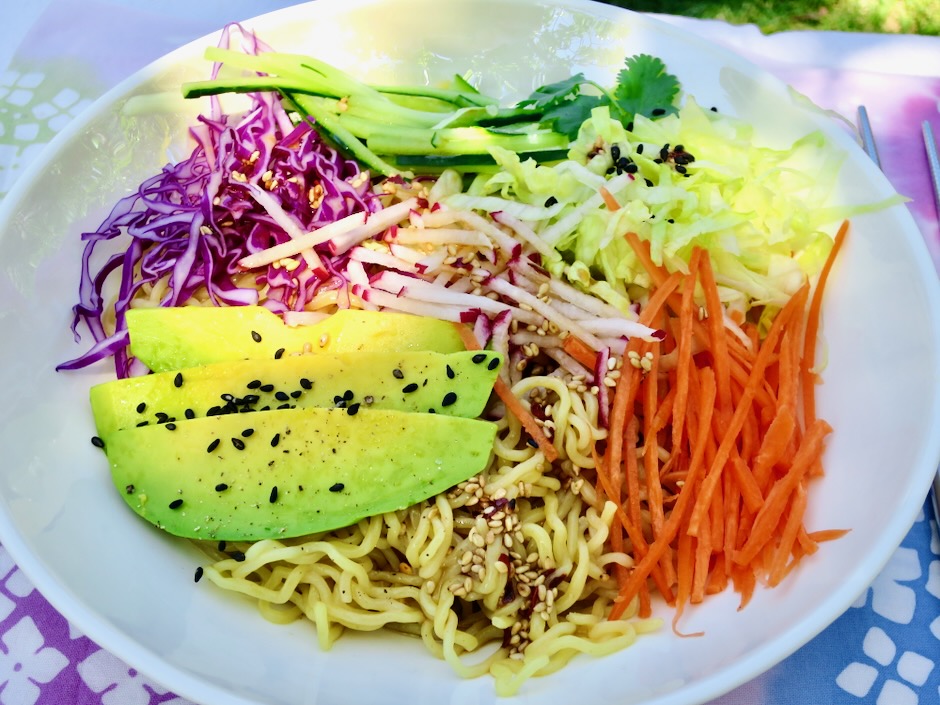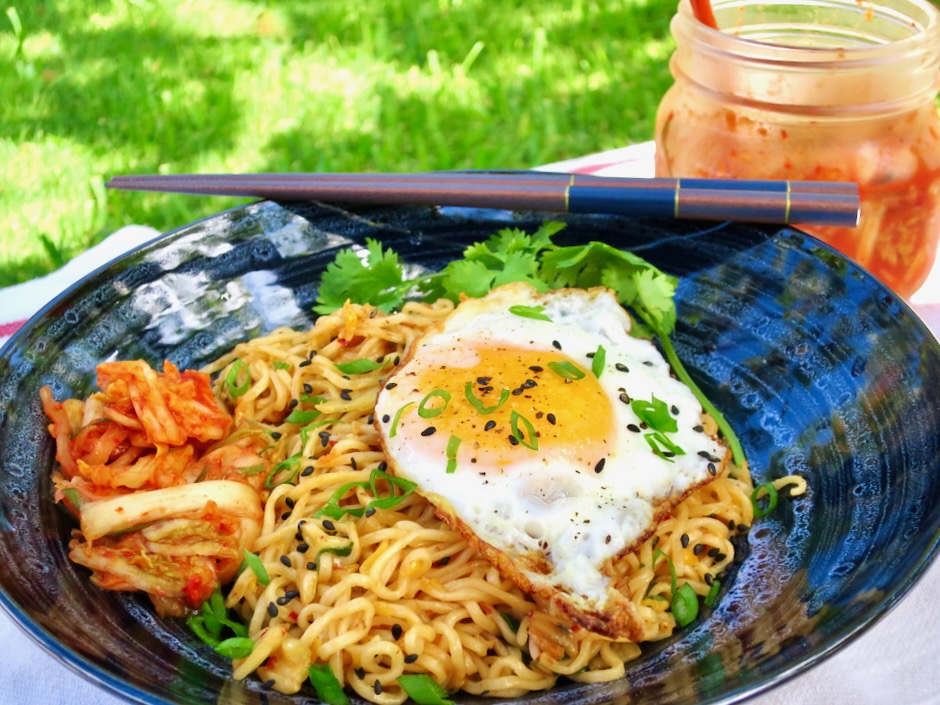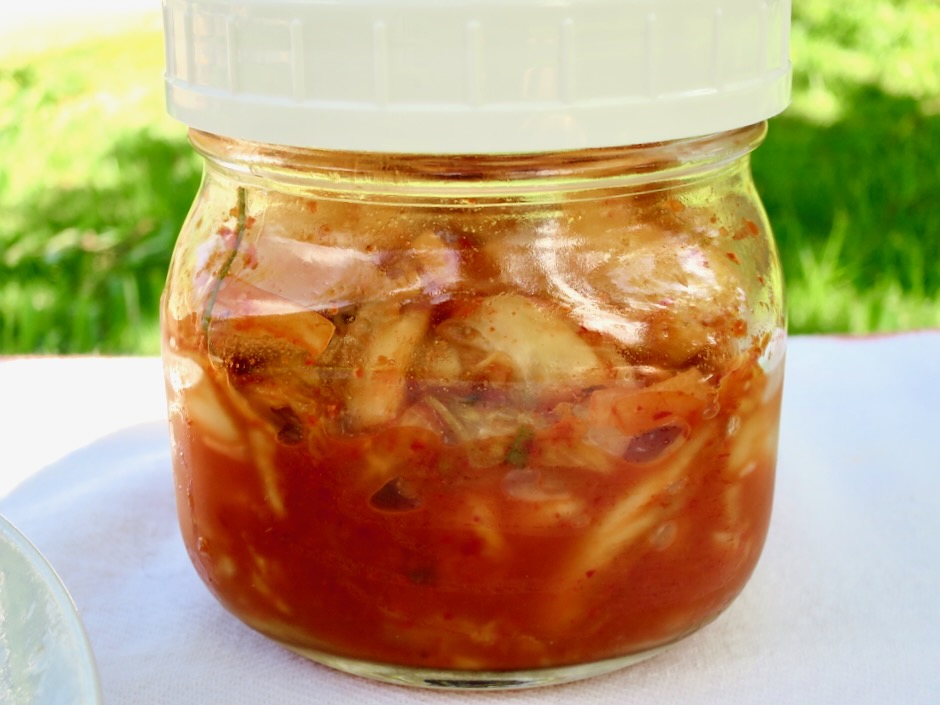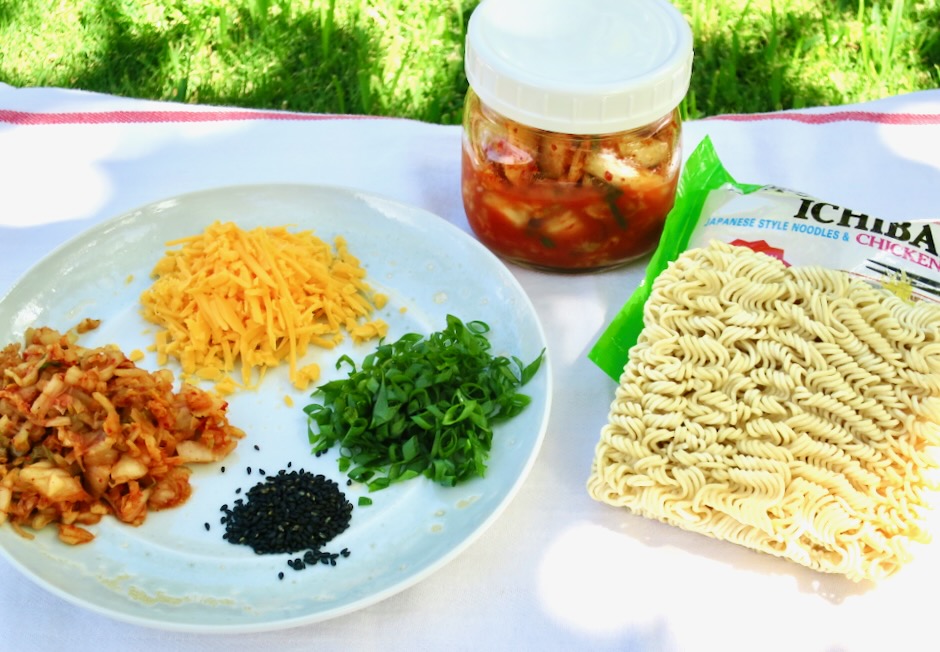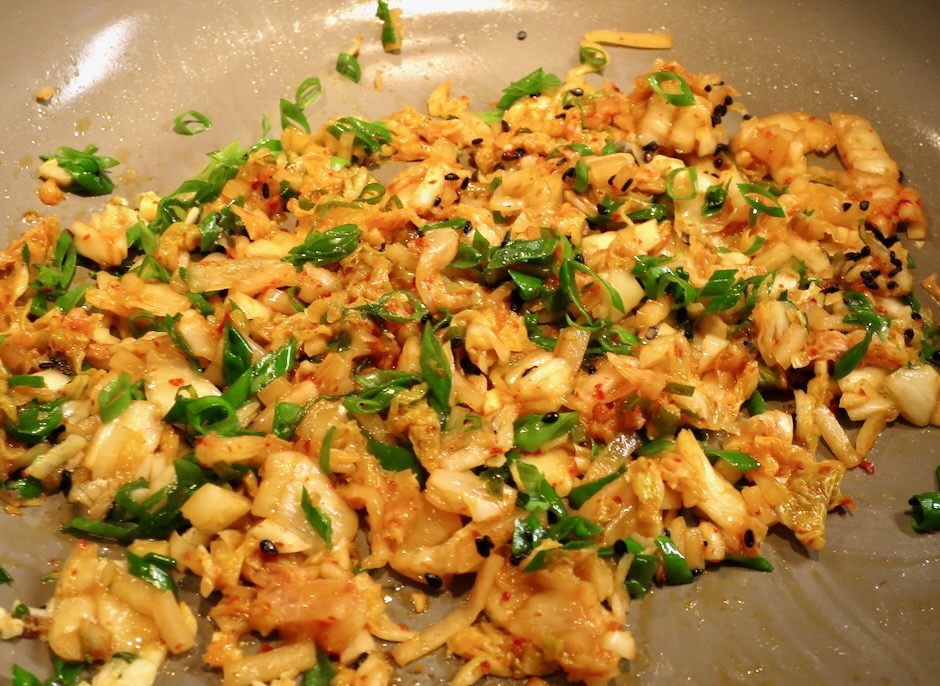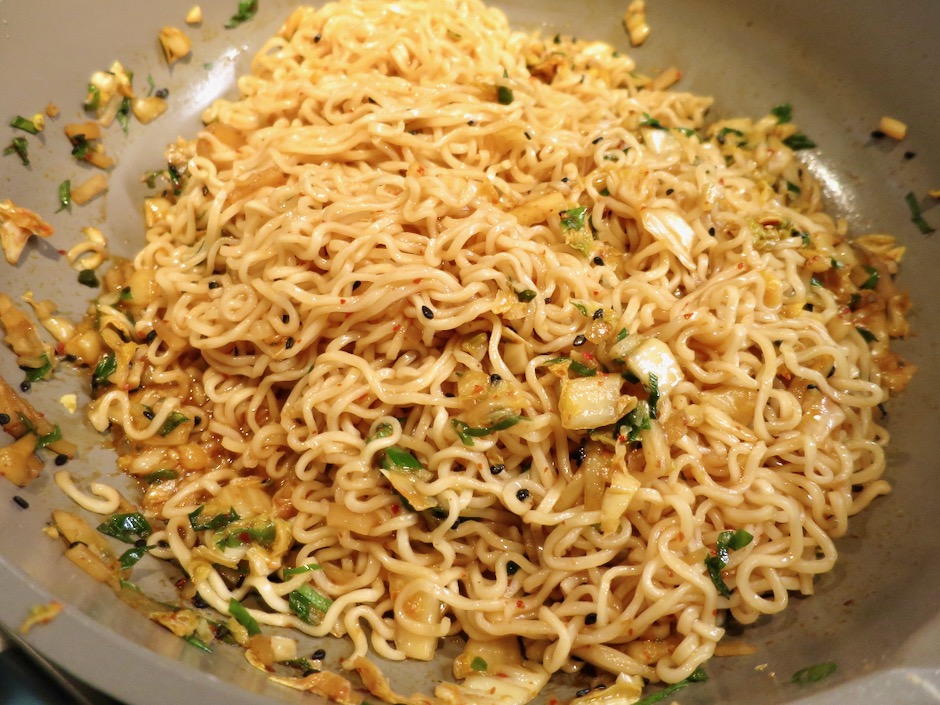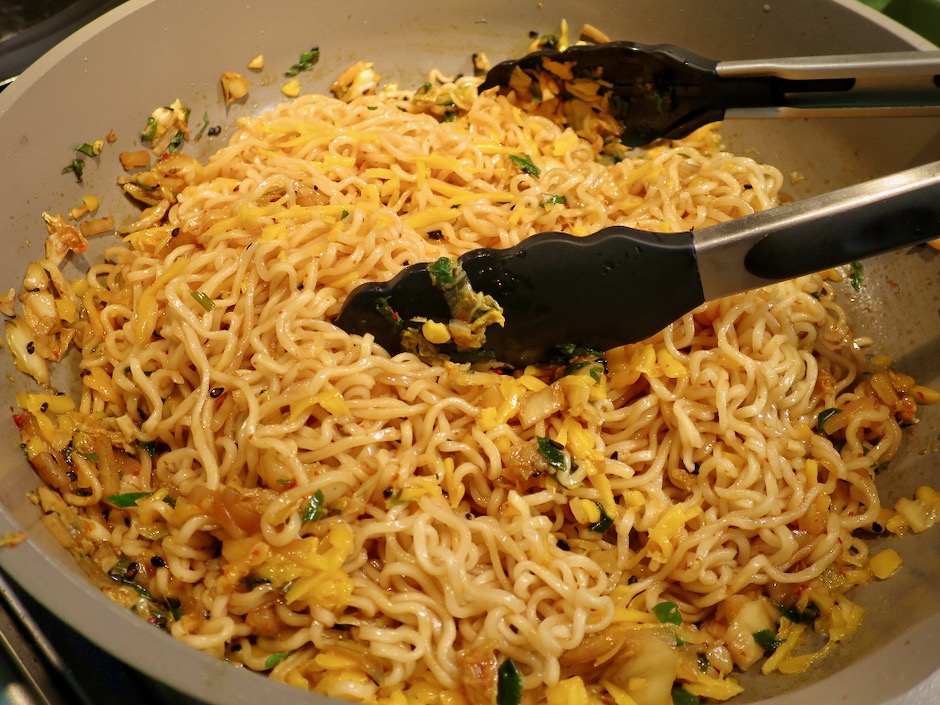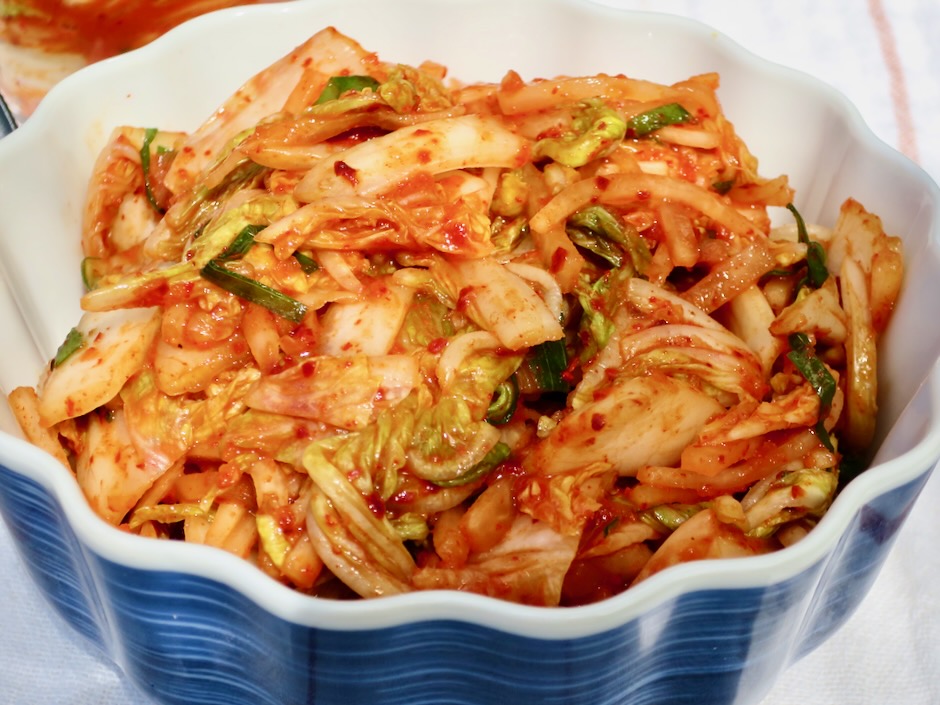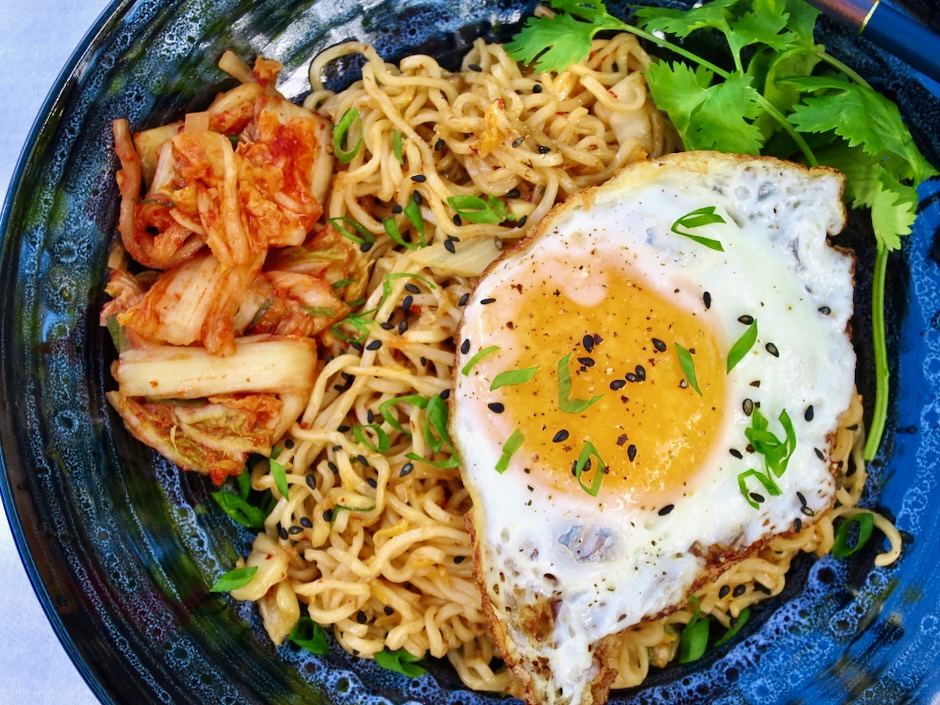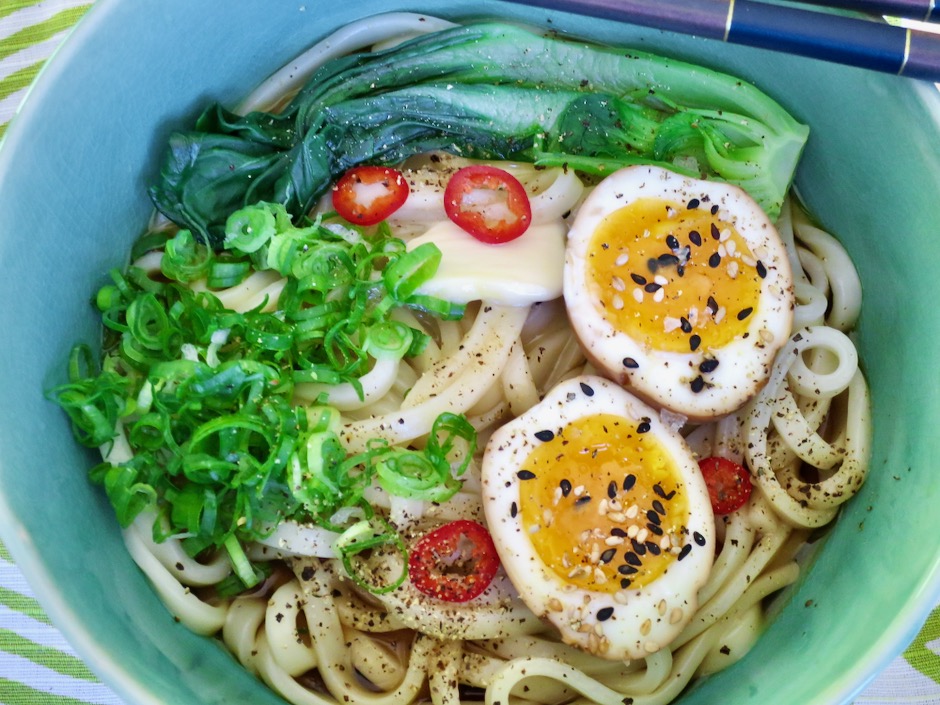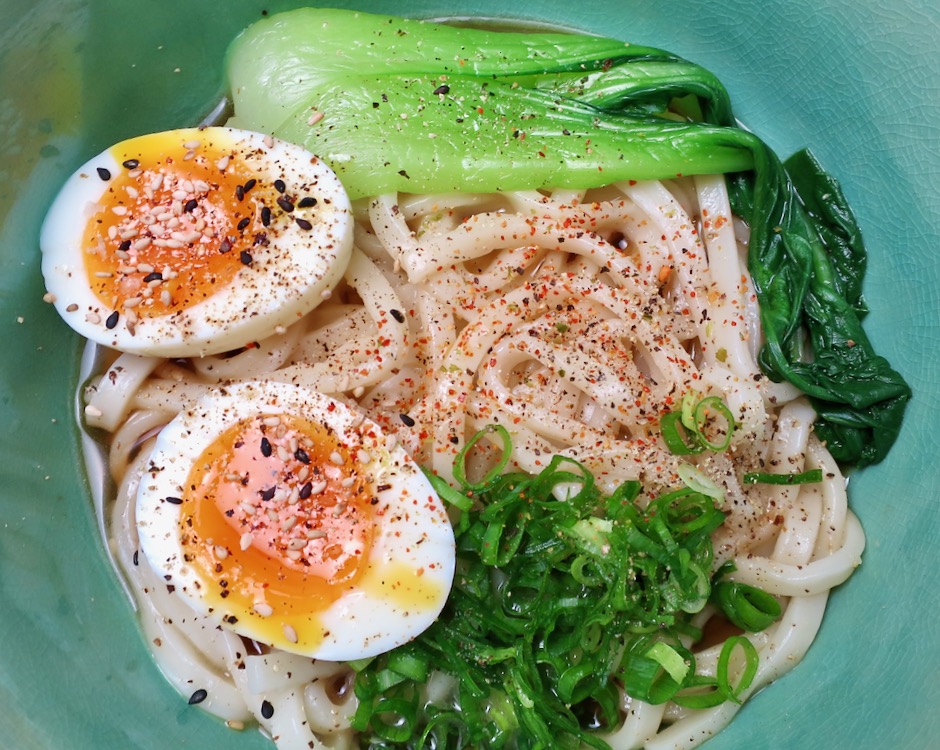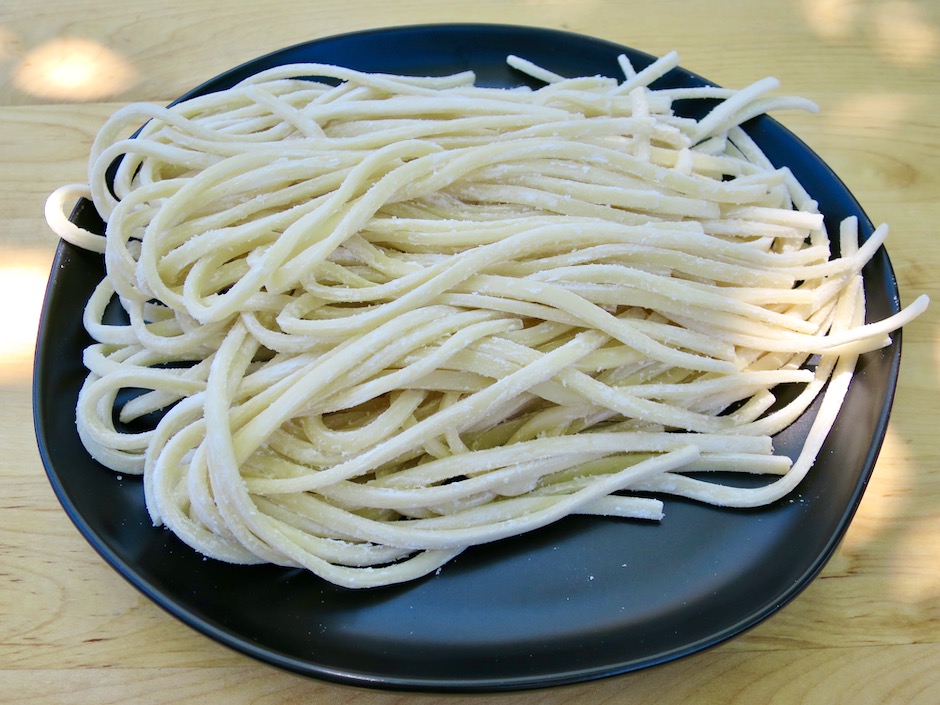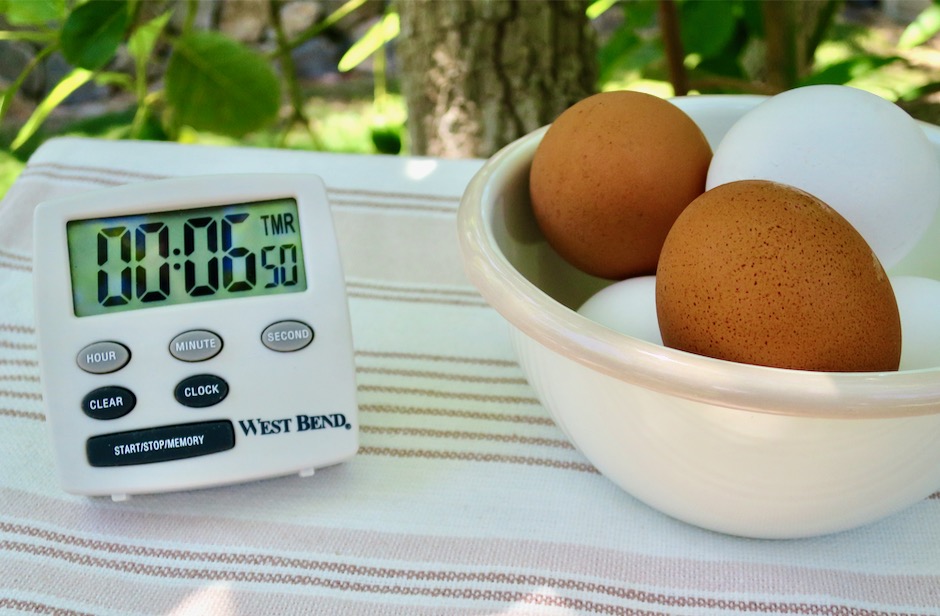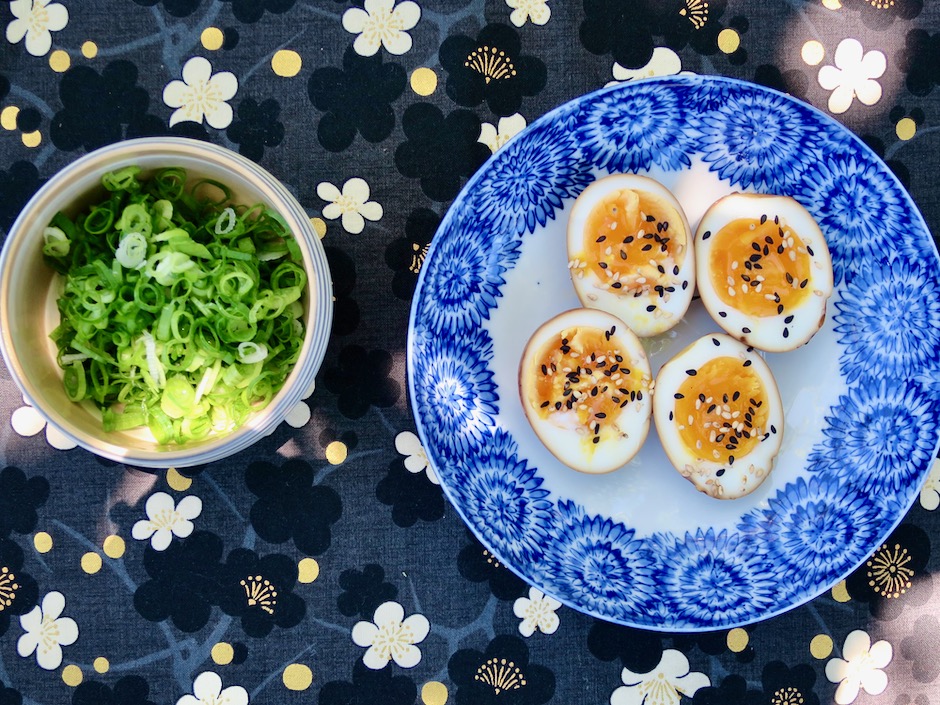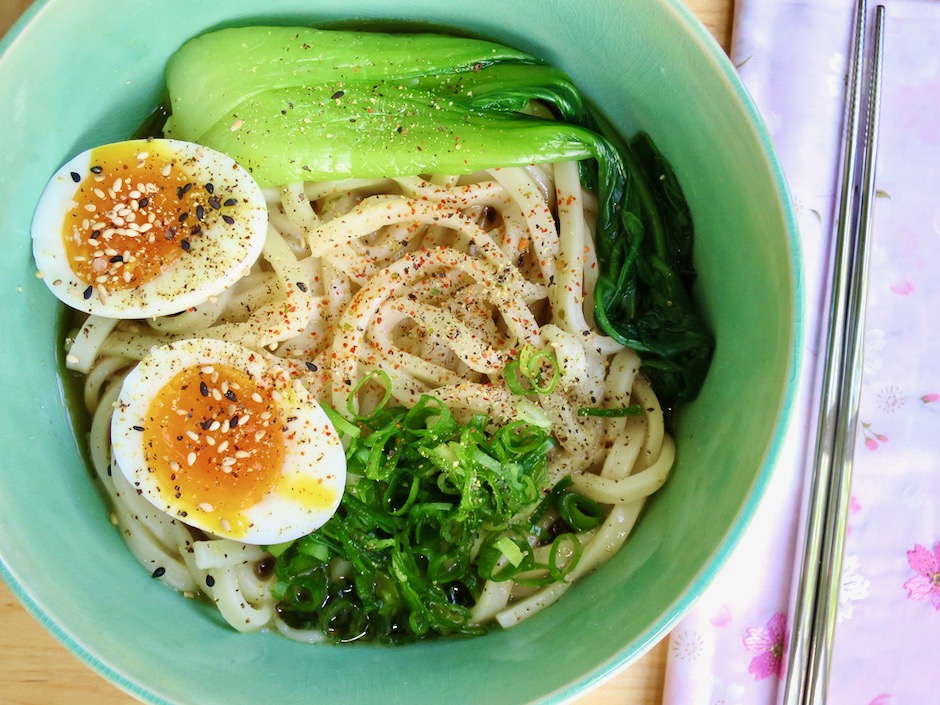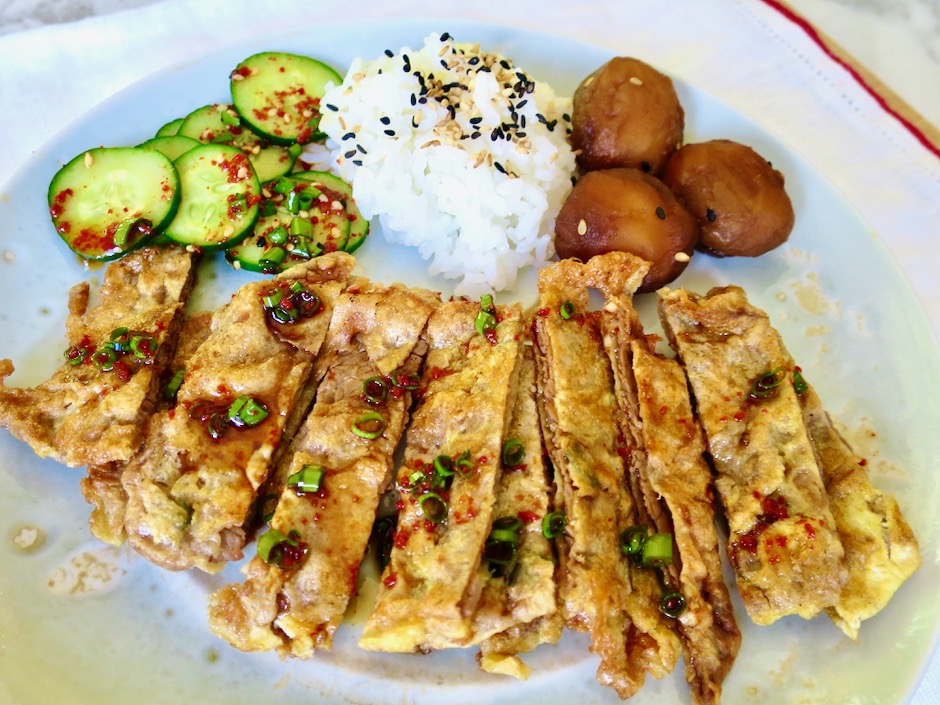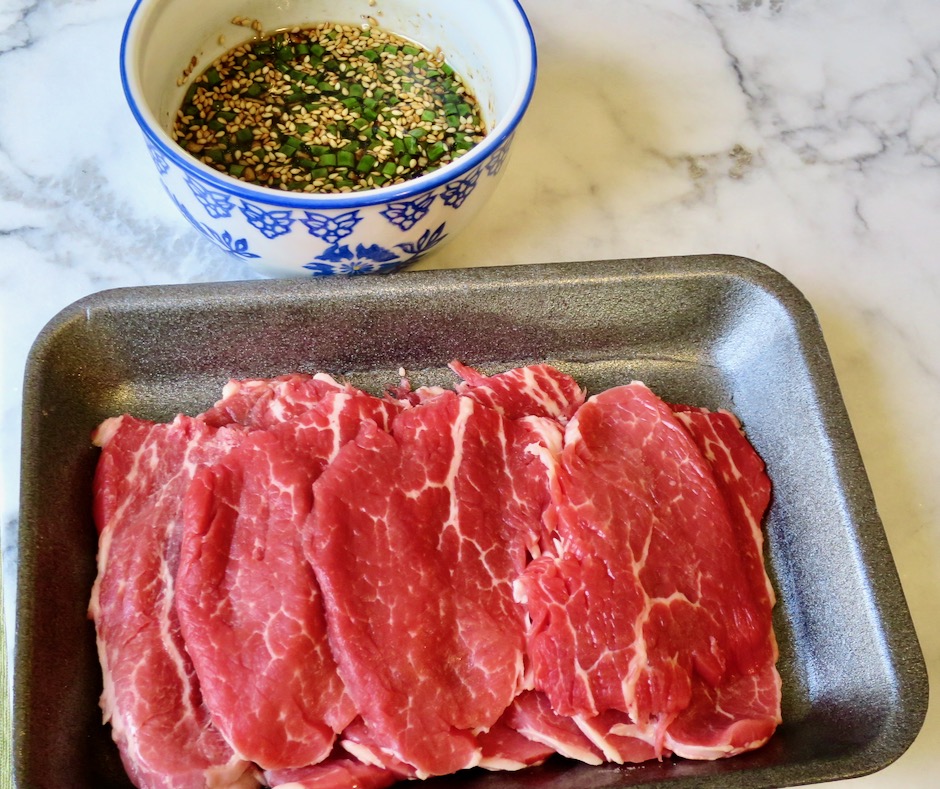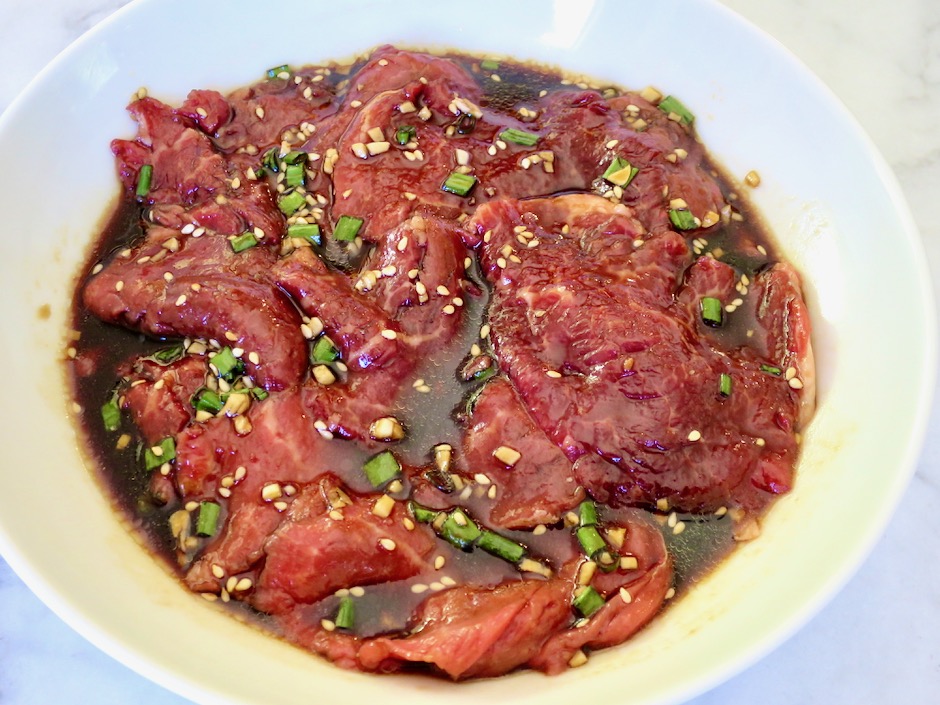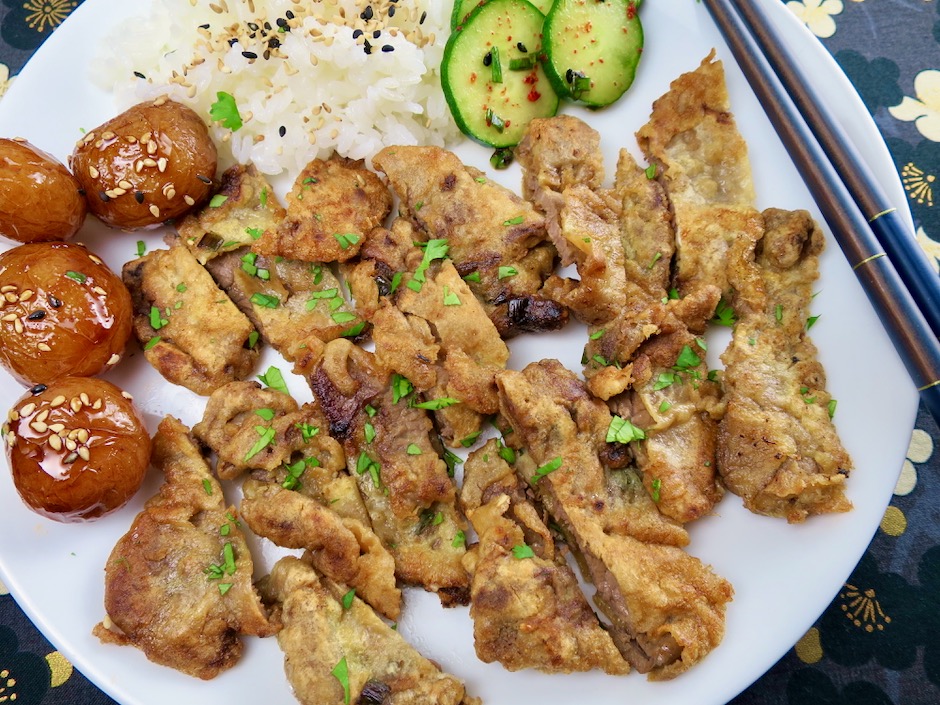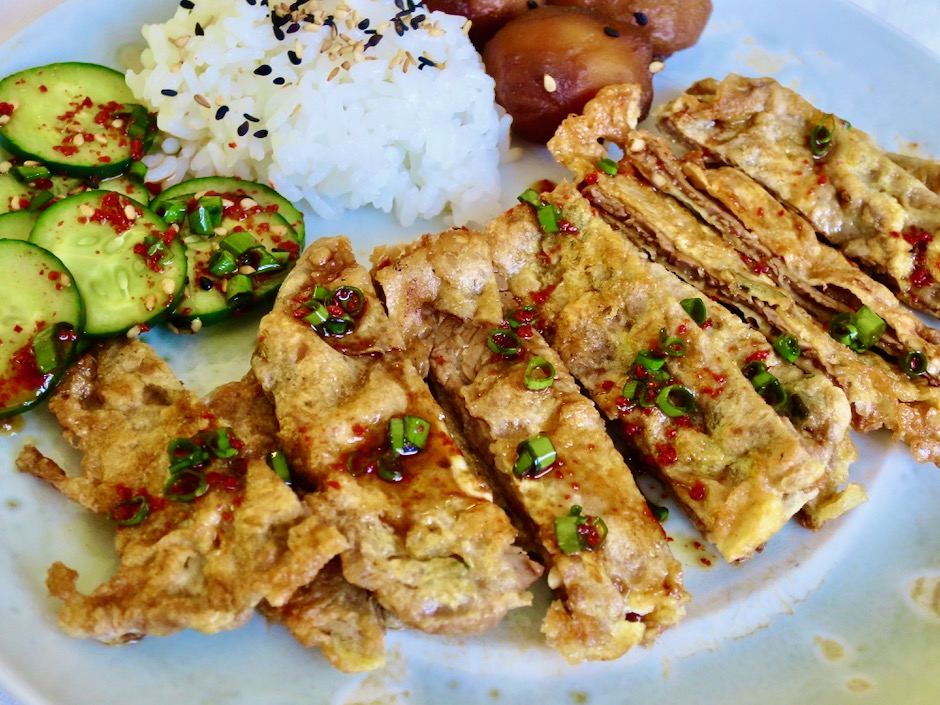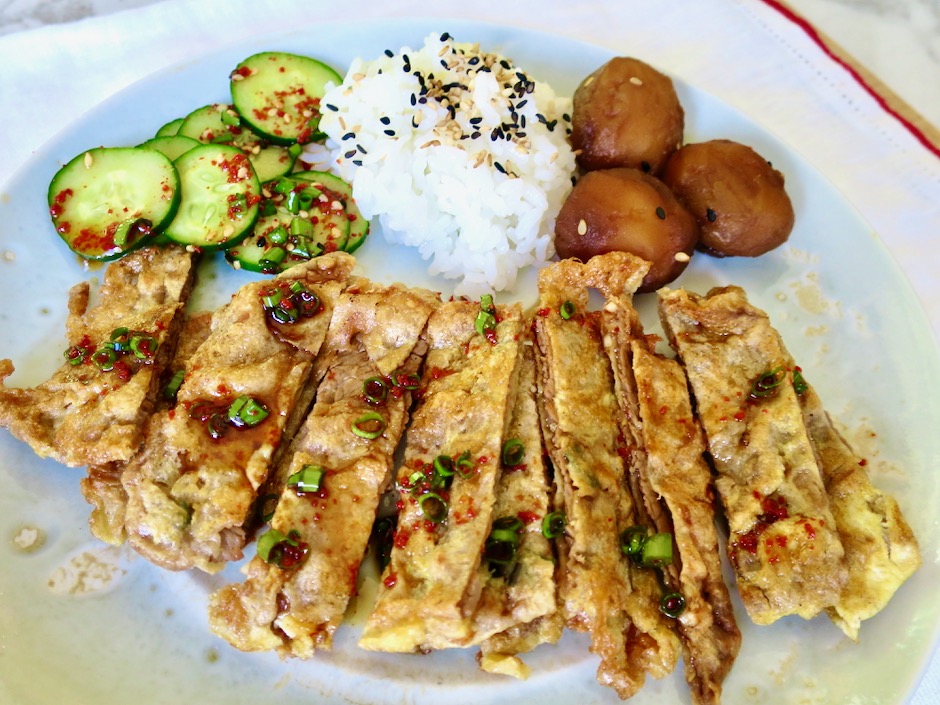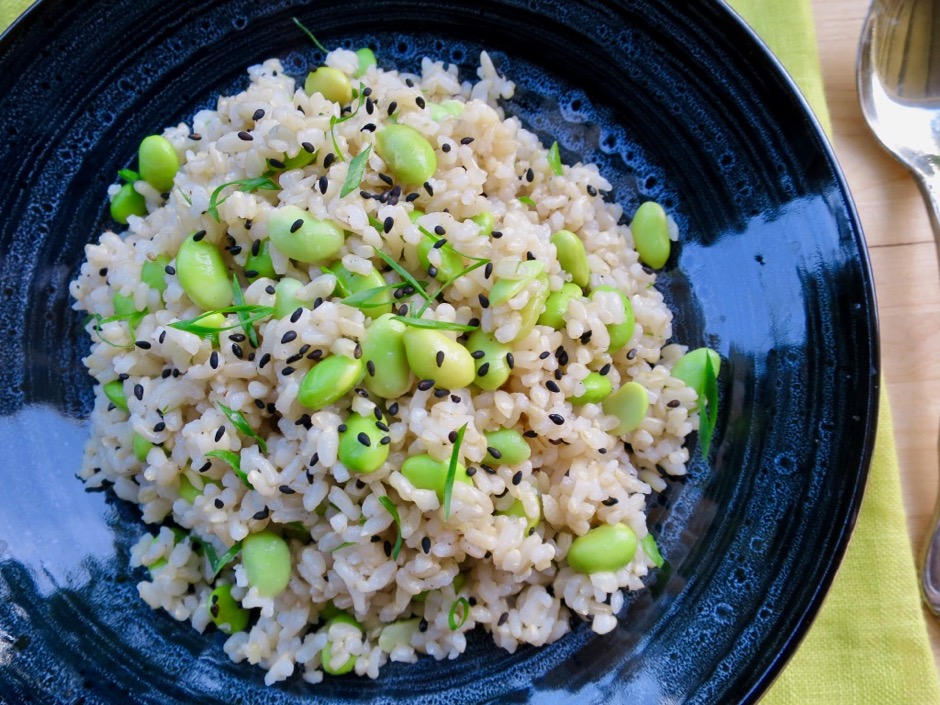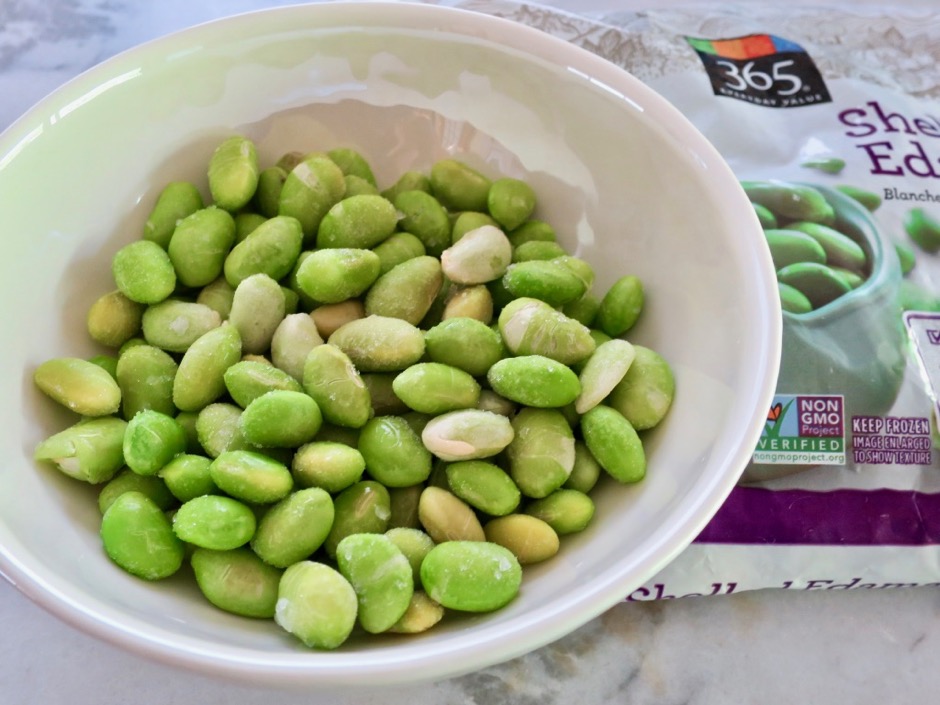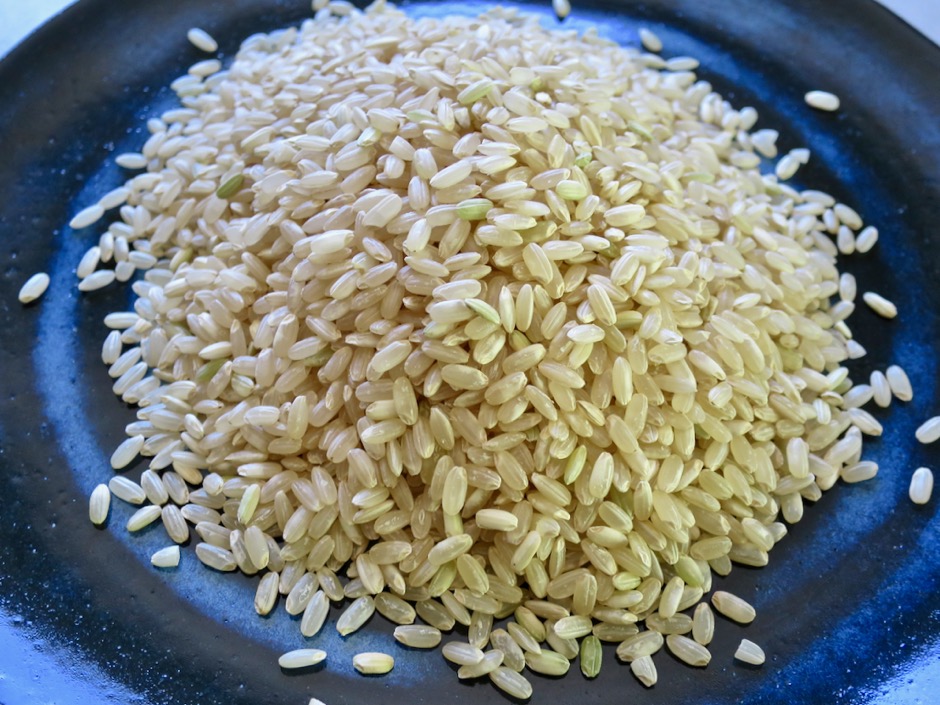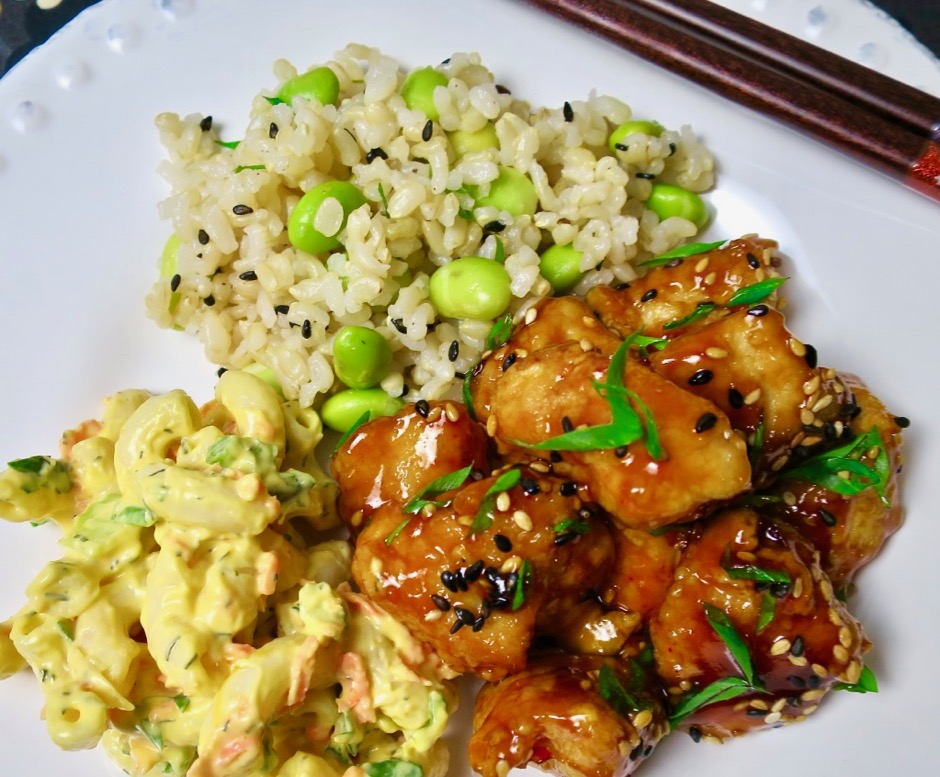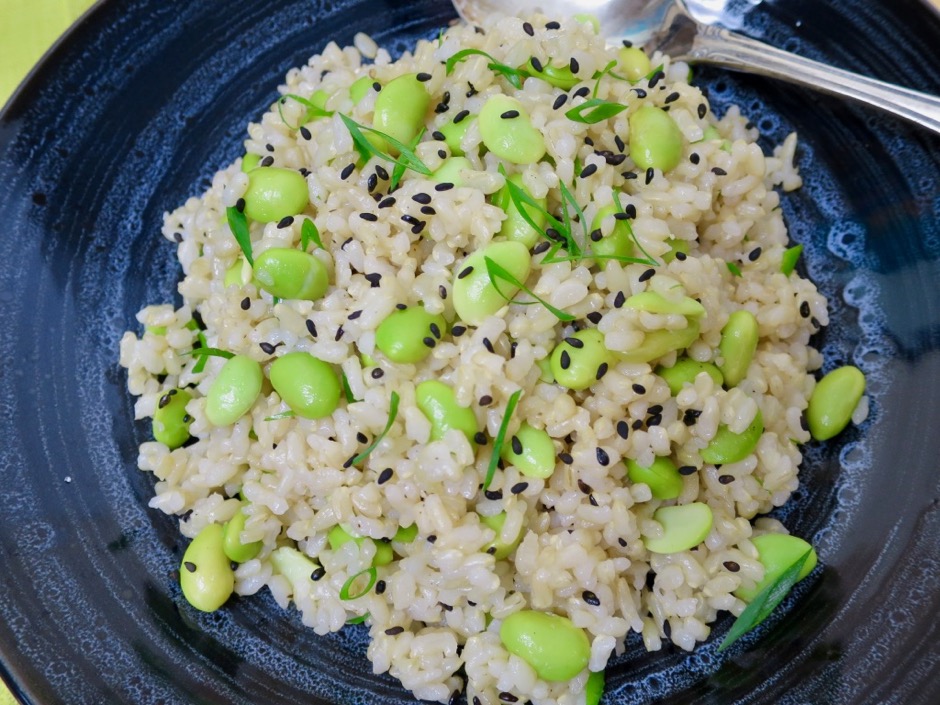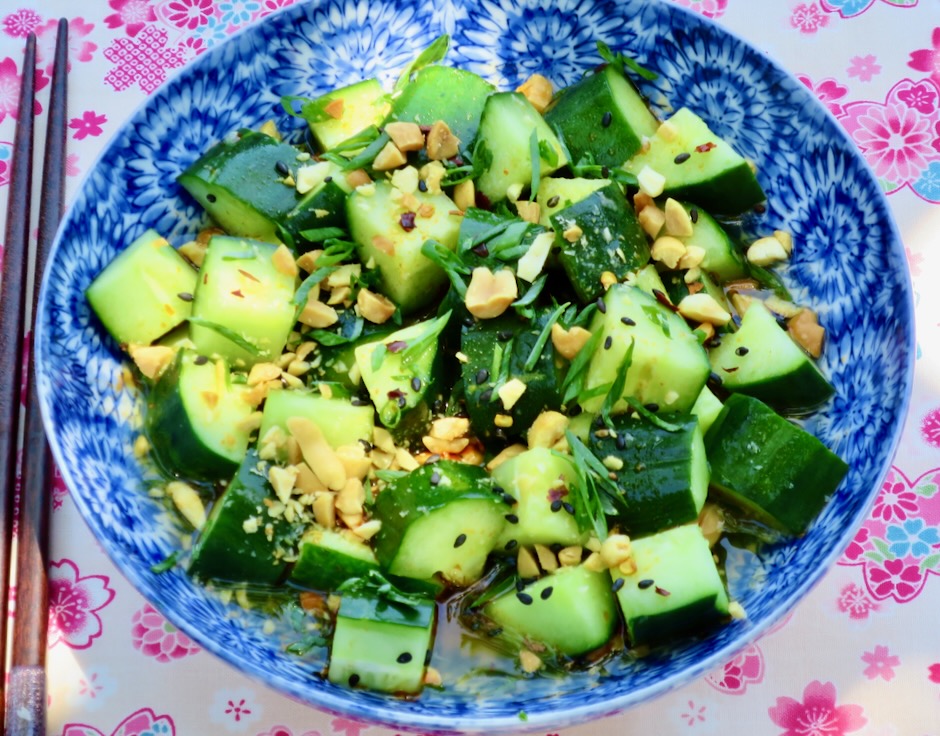
A couple of cucumber plants can easily produce a basket load of cucumbers, much more than the two of us can consume in a couple of days. When this happens, we pass out cucumbers to friends and neighbors so they can enjoy them while they are fresh and crunchy (like apples). I’m always on the lookout for ways to use these beautiful Japanese cucumbers, and pickles are usually the first thing that comes to mind. However, I discovered an alternative to pickles. This is a quick and easy recipe that can be served right away. The sweetness from honey and spiciness from the chili oil makes this salad exceptionally tasty.
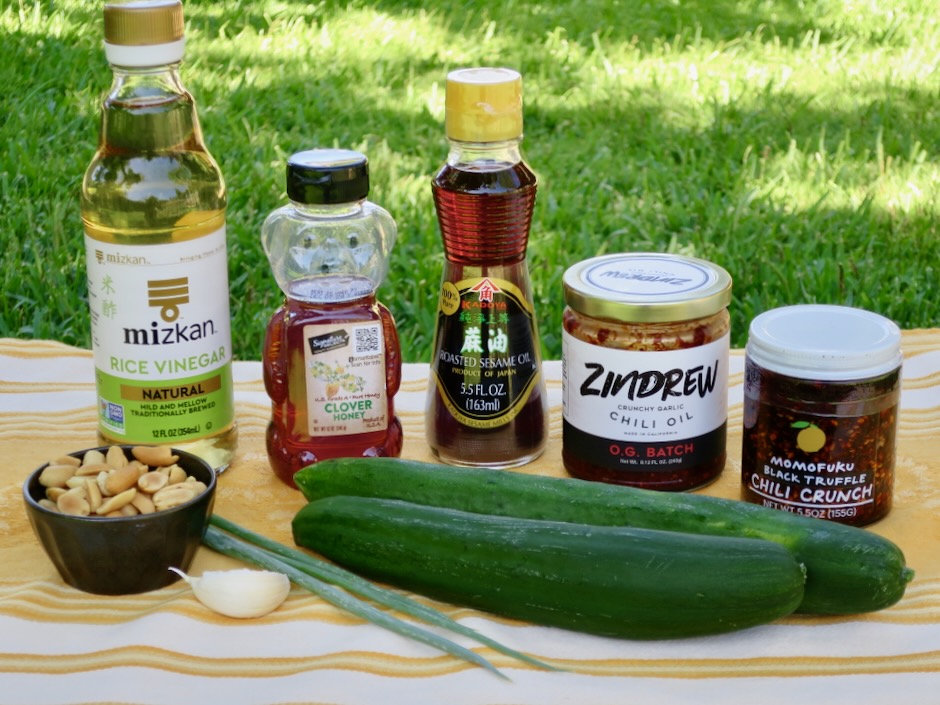
You’ll only need a small amount of chili crunch to flavor the sauce. If you don’t have any on hand you can swap it out with plain chili oil or simply add a dash of crushed red pepper flakes.
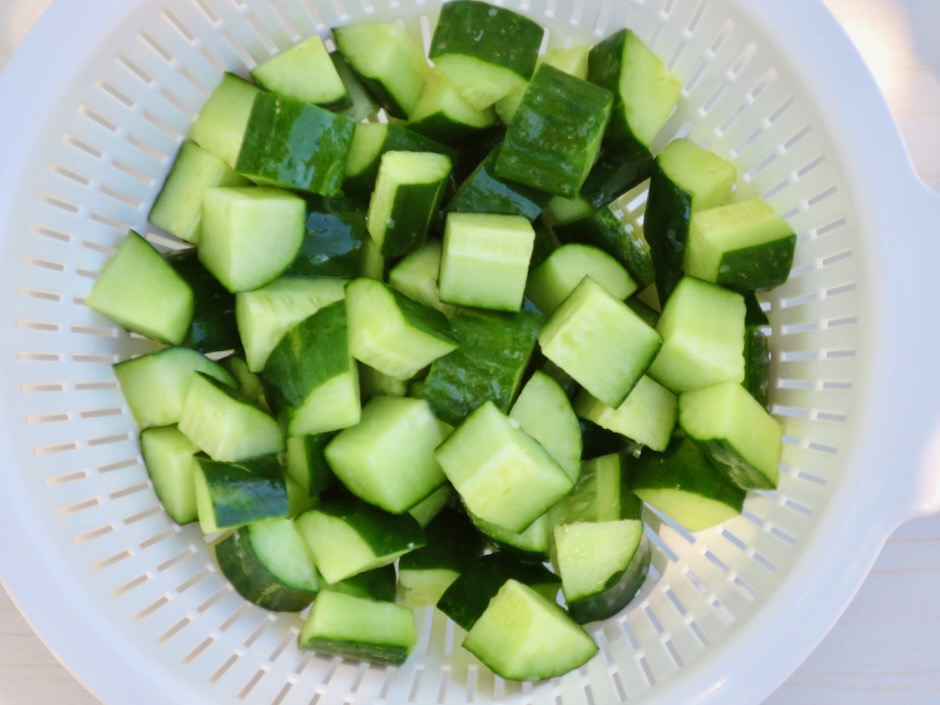
Japanese cucumbers don’t need to be peeled since their skins are quite tender. Leaving the skins on will ensure an extra crunchy and colorful salad.
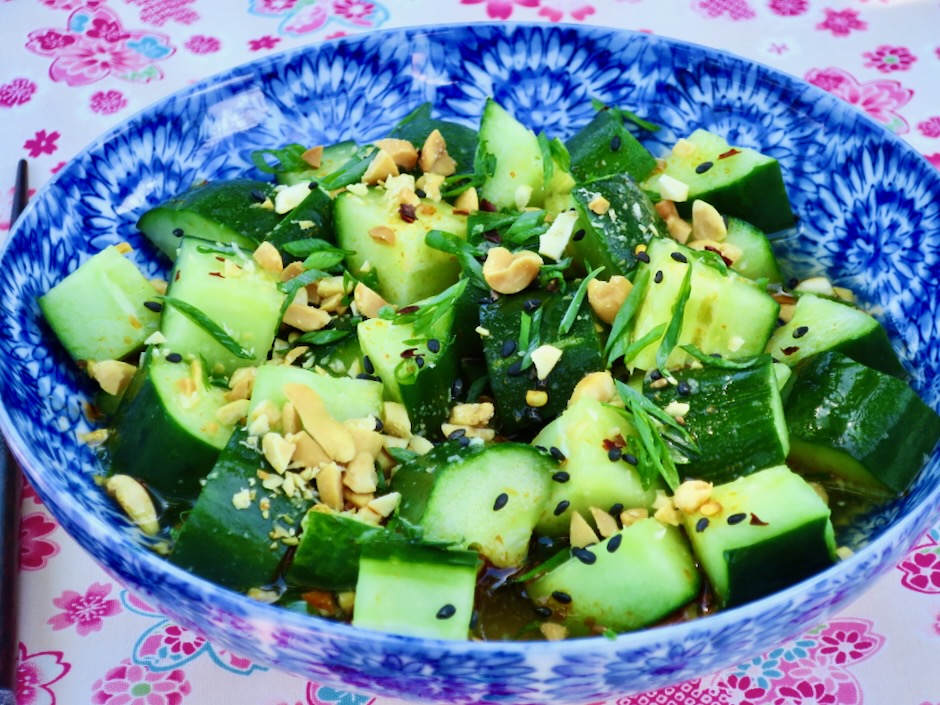
This refreshing cucumber salad has all the flavors and textures that make a delightfully cool summery side dish. Japanese cucumbers, crunchy-salty peanuts, sweet and spicy sauce. Serve with one of these and you have the perfect meal: teriyaki meat sticks, seared ahi, tofu, along with a side of rice.
Cucumber Salad with Peanuts & Chili Sauce
4
servingsIngredients
2 Japanese cucumbers (about 12 ounces), diced
1 teaspoon kosher salt
2 small green onions, finely sliced
2 tablespoons chopped roasted and salted peanuts
3 tablespoons unseasoned rice vinegar
2 tablespoons honey
1 tablespoon sesame oil
1 teaspoon chili crunch or chili oil
1/4 teaspoon finely grated garlic
Directions
- Slice cucumbers lengthwise into quarters. Cut away areas with seeds. Chop each quarter into 1-inch pieces. Season with 1 teaspoon kosher salt and leave to drain in a colander for about 20-30 minutes.
- Meanwhile, in a small bowl, whisk together the rice vinegar, honey, sesame oil, chili crunch or chili oil, and garlic. Set aside.
- Give the salted cucumbers a quick rinse to remove most of the salt. Pat dry with a clean towel.
- Transfer the cucumbers to a low sided bowl and drizzle with the reserved sauce. Top with chopped peanuts and sliced green onions. Serve right away.
Notes
- You may chill the cucumbers in the sauce for an hour or so if you prefer a colder salad. Sprinkle peanuts and green onions on just before serving.

